Internal Email Communications Tool
Web Design Lead & Web Development
A new intranet launch opened the door to modernizing internal email communications. Following the global intranet rollout on the Unily platform, we were able to implement their Broadcast Center (email comms) tool. This allowed us to streamline global messaging, ensure brand consistency, and better target communications across sub-brands and markets.
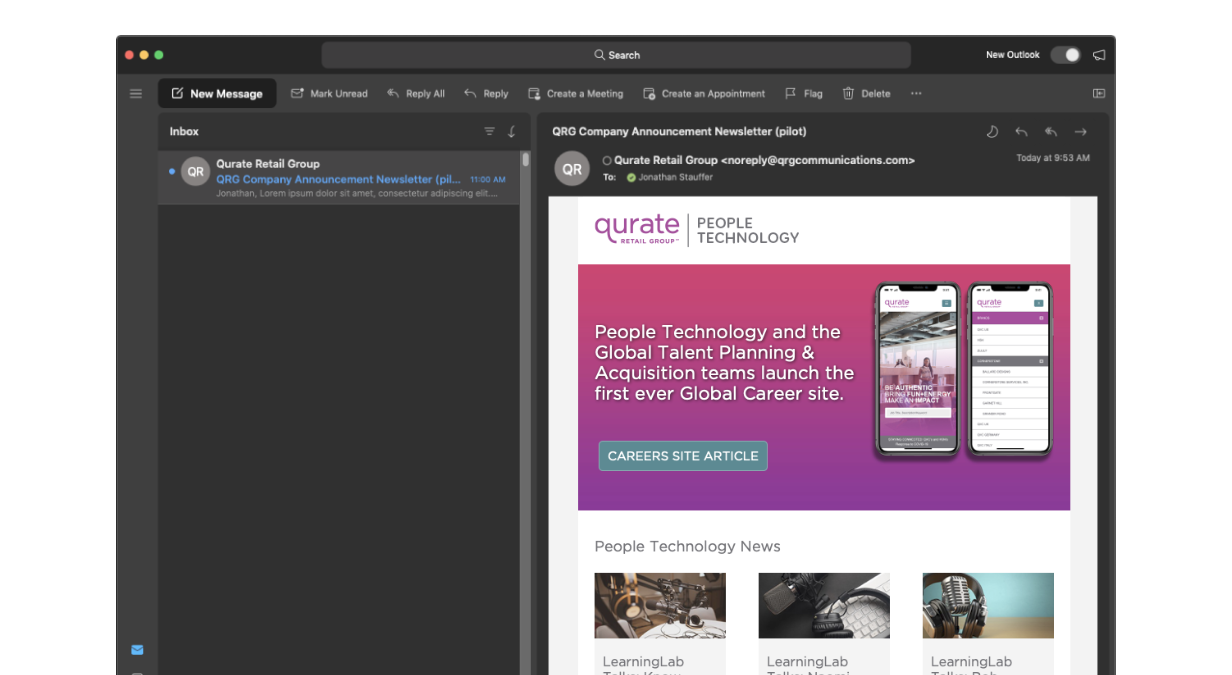
What solutions did this tool provide?
Multiple legacy email systems were consolidated, which helped reduce both cost and administrative overhead, and enable more consistent brand alignment across global sub-brands and markets. Unlike previous tools that required manual content creation, the new system automatically pulled content from existing intranet articles to help streamline the publishing process. Additionally, most of our legacy email platforms were designed for external audiences and lacked meaningful analytics.
- Consolidate legacy email systems.
- Reduce cost and administrative overhead.
- Enable greater brand alignment.
- Automatic content creation.
- Provide meaningful analytics.
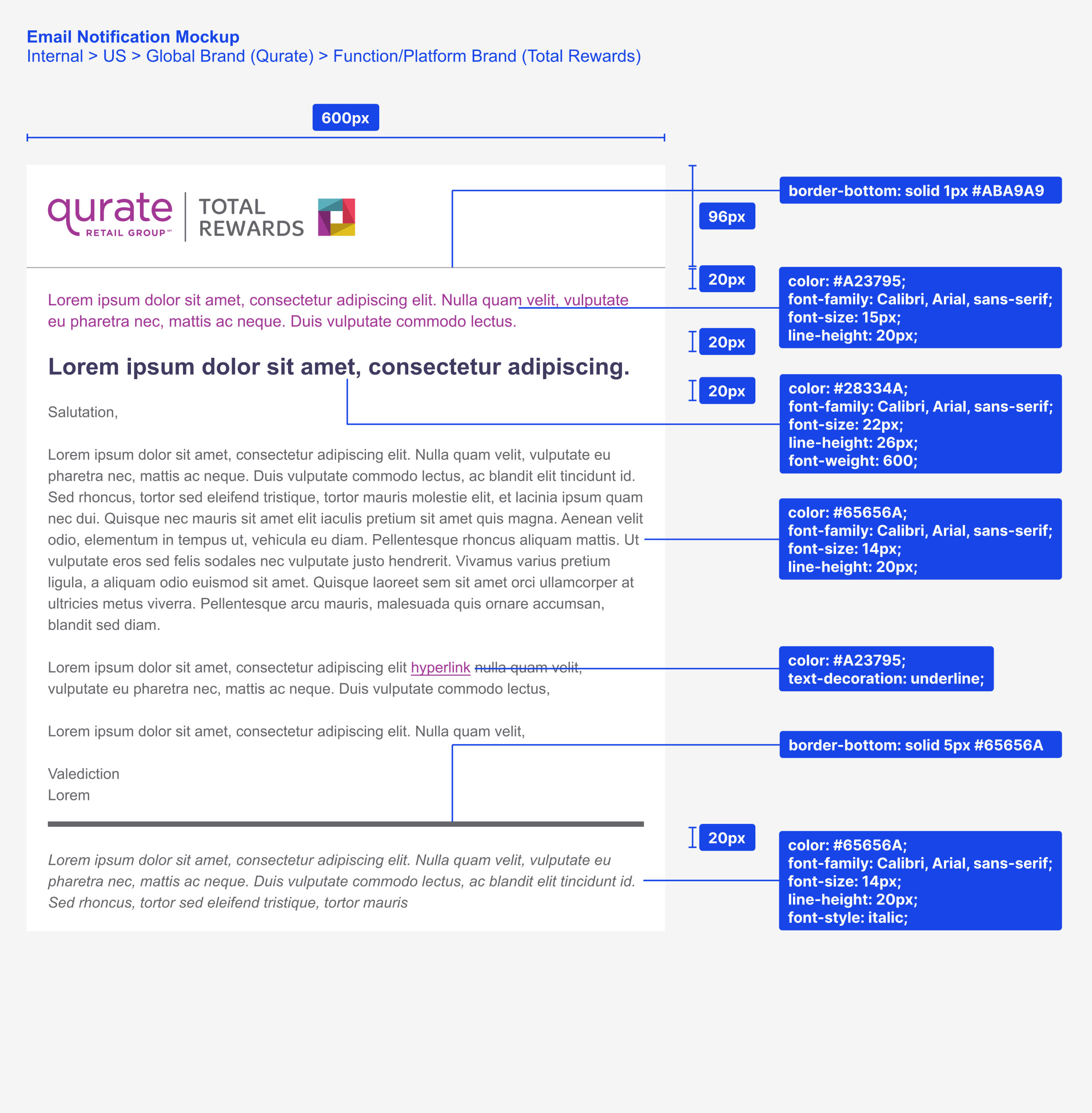
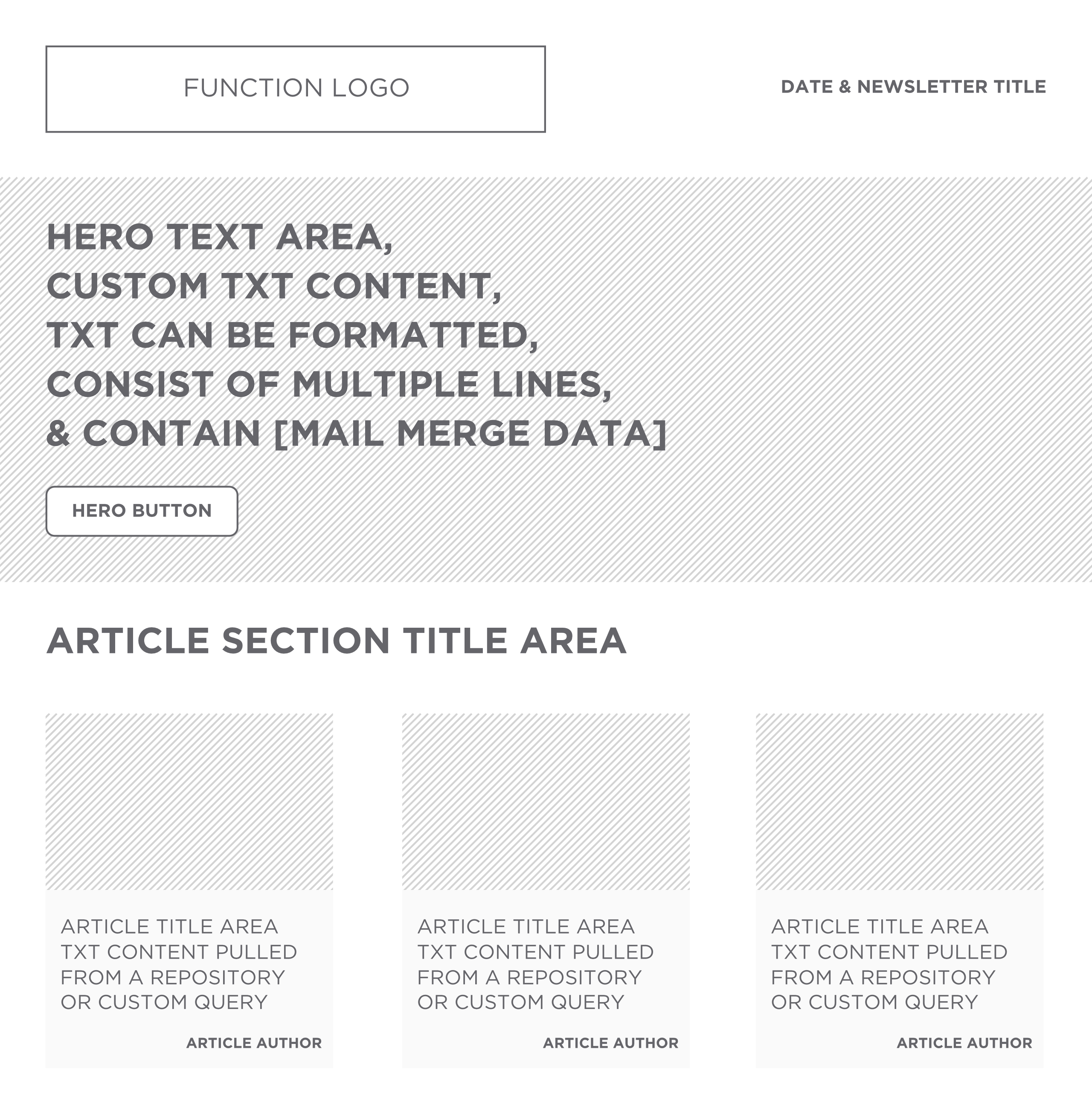
Prototyping the delivered email.
The Broadcast Center solved several issues, but we needed to provide a visual demonstration of the final user experience to our stakeholders. Although the new tool included a variety of built-in templates, the communications team wanted to preserve the look and feel of existing email communications. I extensively documented the current templates, outlining color, font, layout, and spacing specifications. Next, I developed interactive and scrollable prototypes to show how the emails would appear and function across desktop and mobile devices. These prototypes played a key role in gaining stakeholder and cross-functional team buy-in.
- Document existing email specs.
- Create interactive, scrollable prototypes.
- Secure stakeholder sign-off.
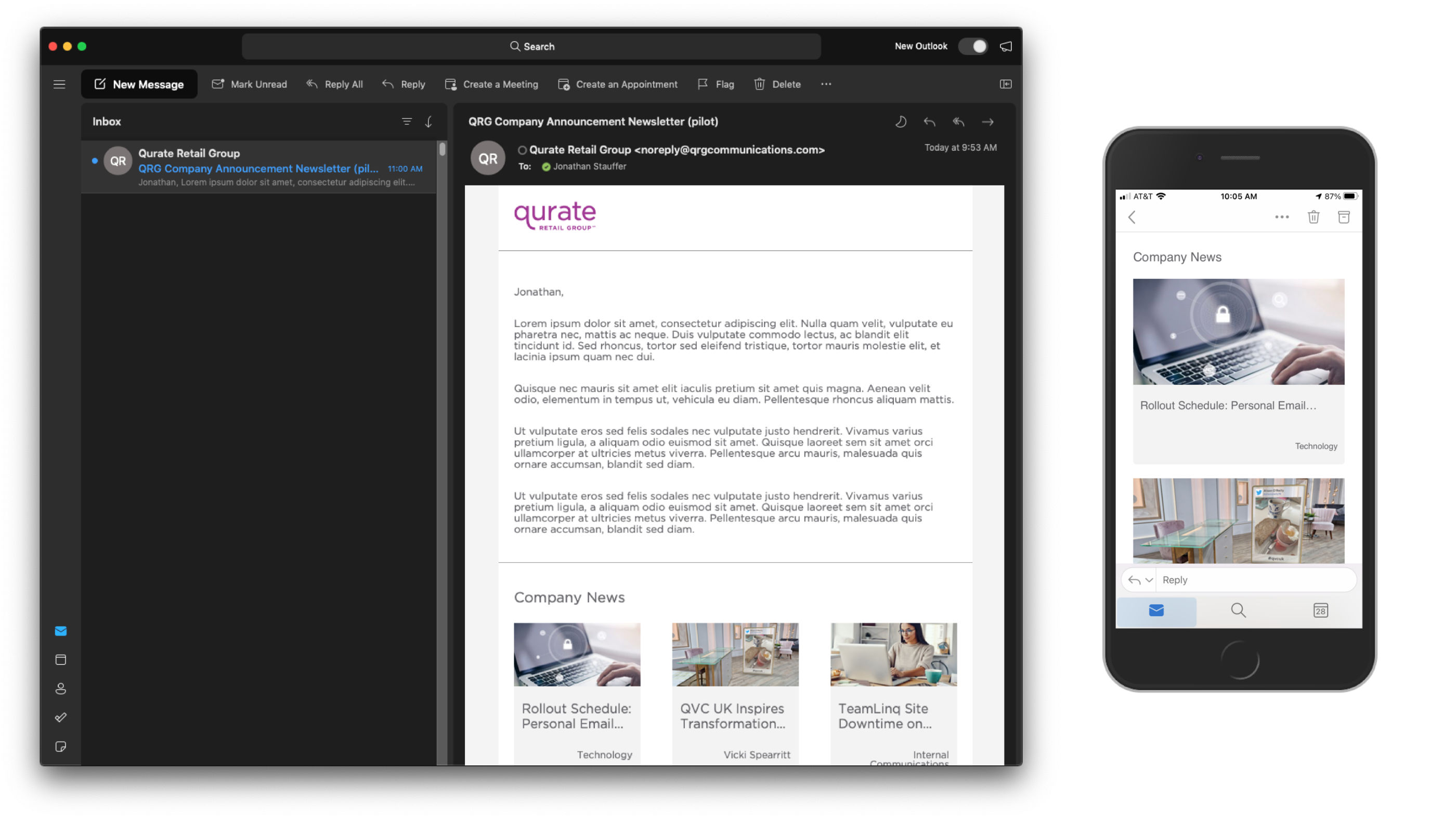
Building the template components.
Using the documented email specs and prototypes, modular template rows were built within the system using HTML, CSS, and Angular statements. These components fully leveraged the new functionality to “pull” content from the intranet, while maintaining the ability to add and edit custom content.
- Build modular component rows with HTML, CSS, and Angular statements.
- Pull content from the intranet.
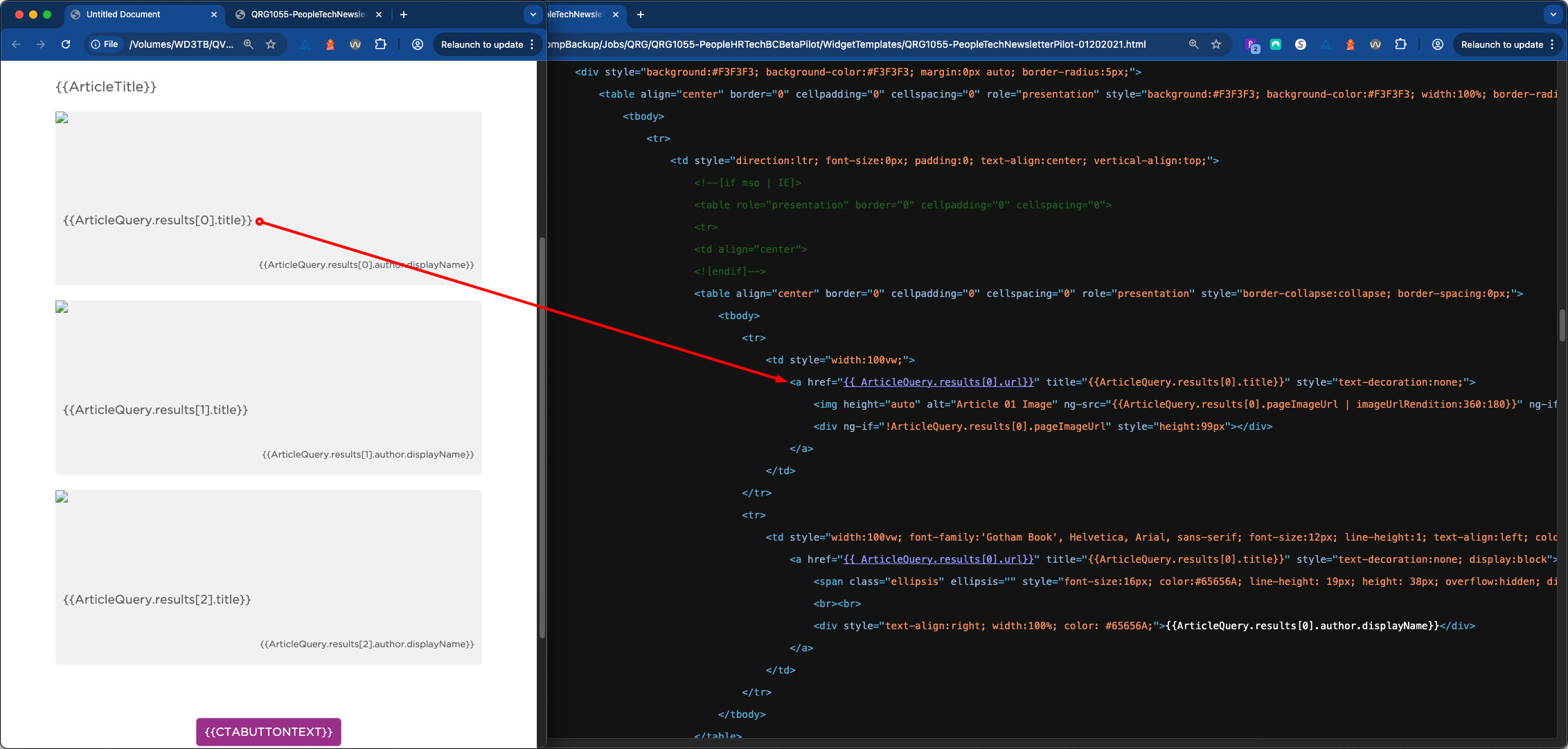
Extending the use of the components and templates.
Several versions of the email templates were developed to support different levels and types of internal messaging, ranging from the corporate level (C-suite), and sub-functions (VP and director level). These included a newsletter-style template that automatically pulled intranet content, a letter-style template for fully custom-written messages, and a hybrid template that combined personalized content with curated articles from the intranet for flexibility and consistency in tone and format.
- Templates to support different levels (C-suite, and V-suite).
- Templates to support both custom and curated content.
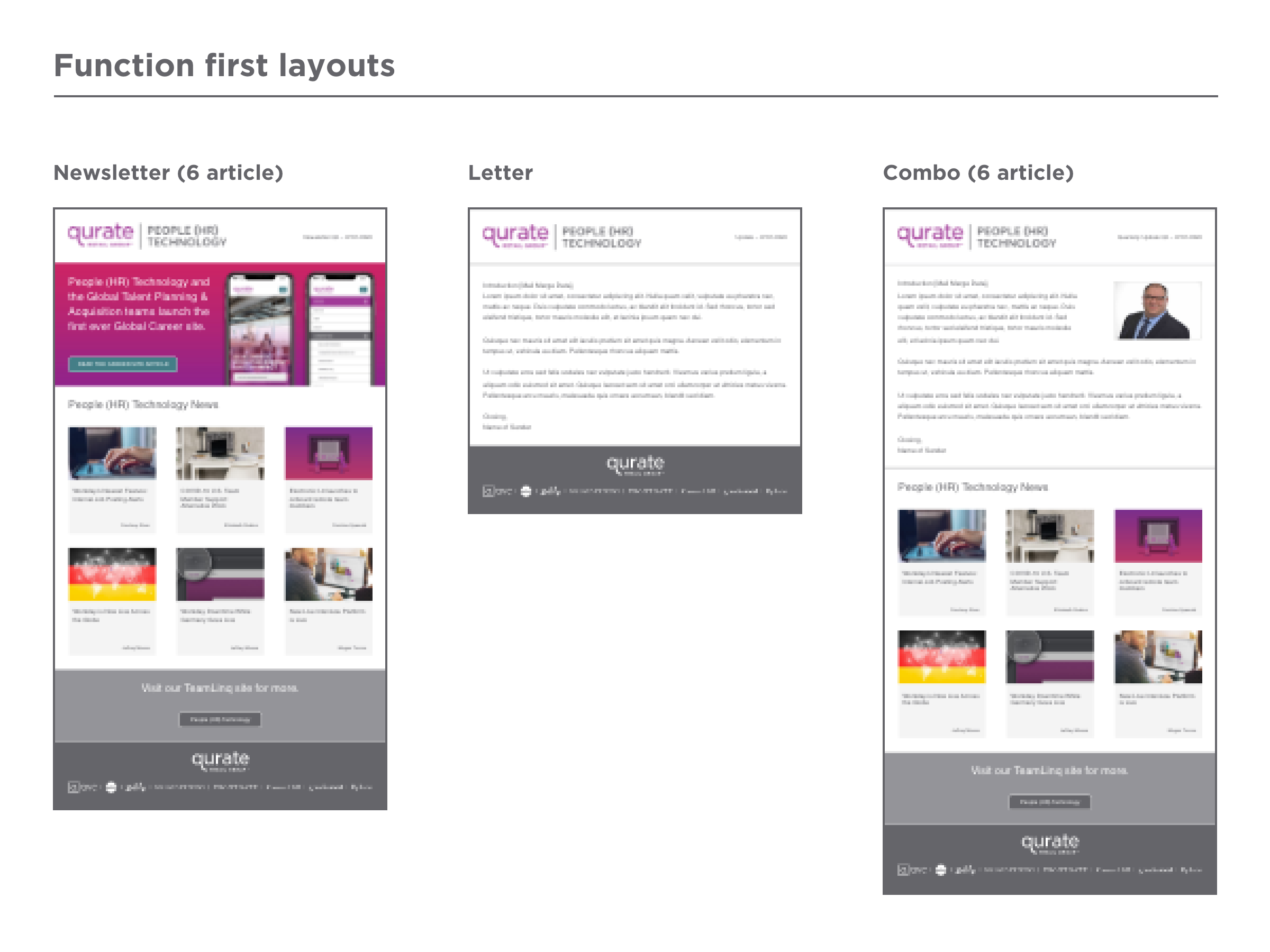
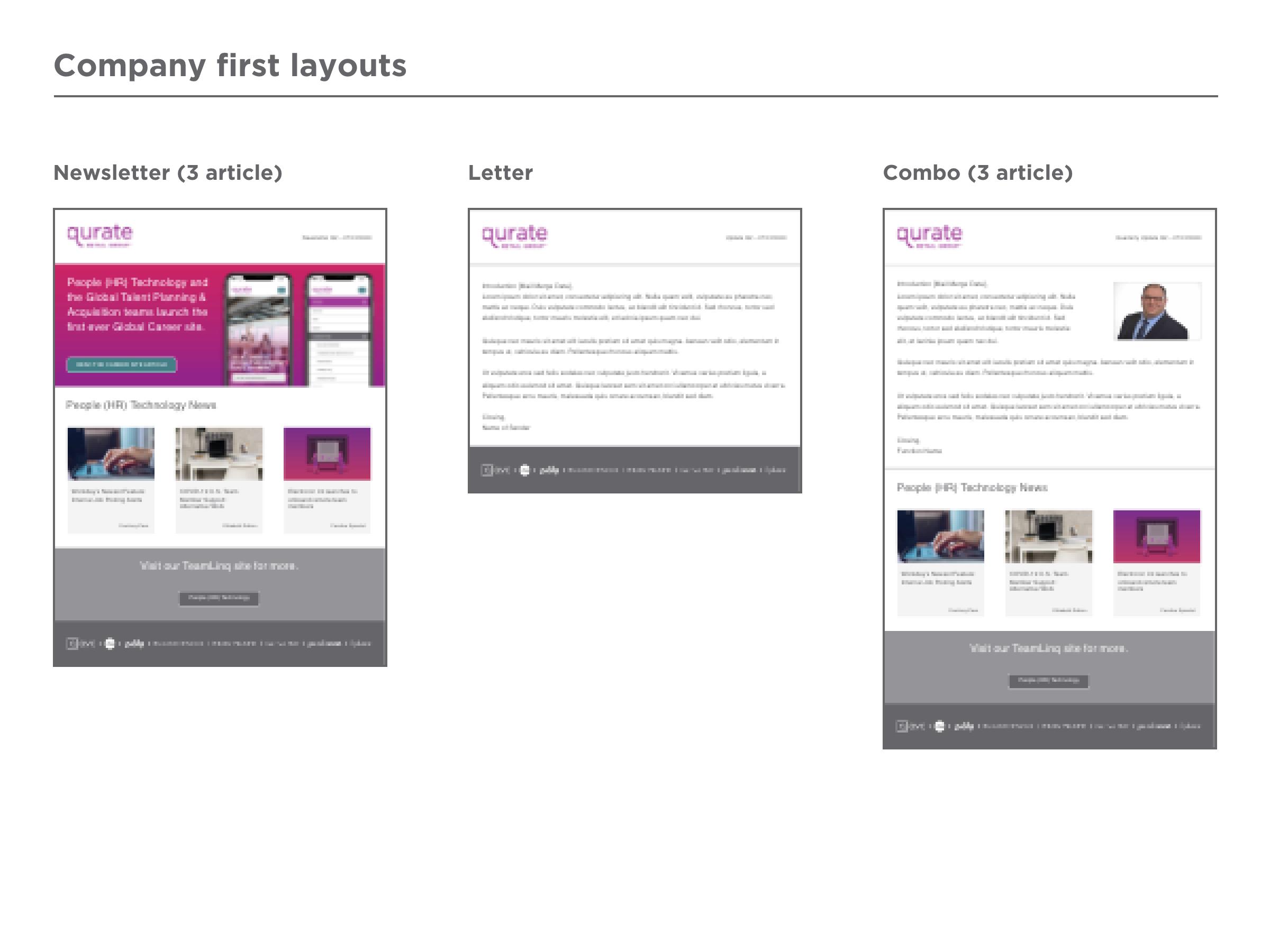
Sharing the impact through data.
Previous email systems and campaigns collected little to no data for delivery rates, open rates, or click-through performance. With the implementation of the Broadcast Center, this critical data became available at both a global level and also within individual campaigns. For the first time, teams could evaluate the effectiveness of their communications and make data-driven decisions. This analytics capability was a key selling point of the project, offering stakeholders clear, measurable value and answering the “what’s in it for me?” question.
- Enabled analytics for the first time.
- Provided both high-level and campaign-specific insights.
- Delivered clear, measurable R.O.I. to help secure stakeholder buy-in.
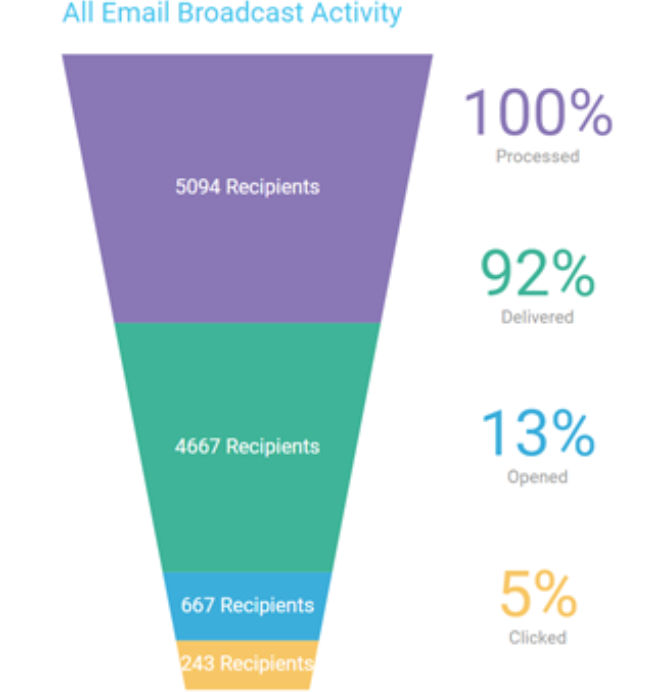
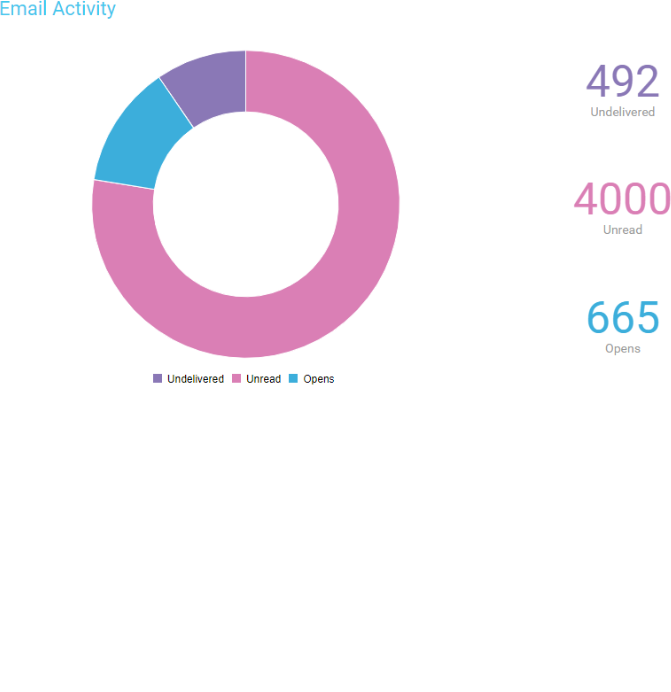
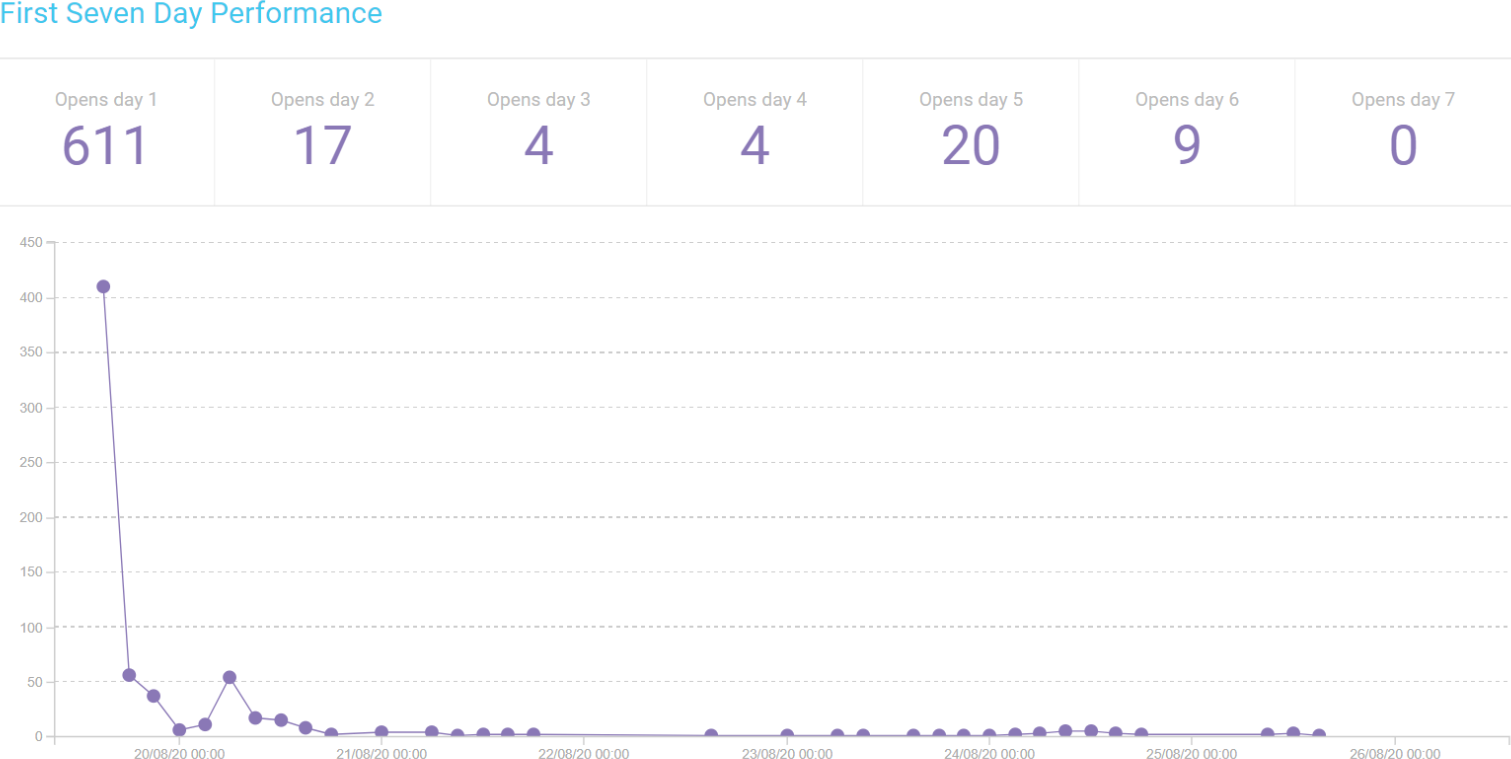
The delivered solution.
Our existing email platforms required manual creation and relied on old technology (Microsoft Outlook templates), were costly (Poppulo), were designed for external applications (Constant Contact), and provided little or no actionable insights and analytics. With the implementation of the Broadcast Center, we solved these issues for most of our internal clients, resulting in reduced workloads, lower costs, and actionable data.
- Reduced workloads.
- Lower costs.
- Actionable data.